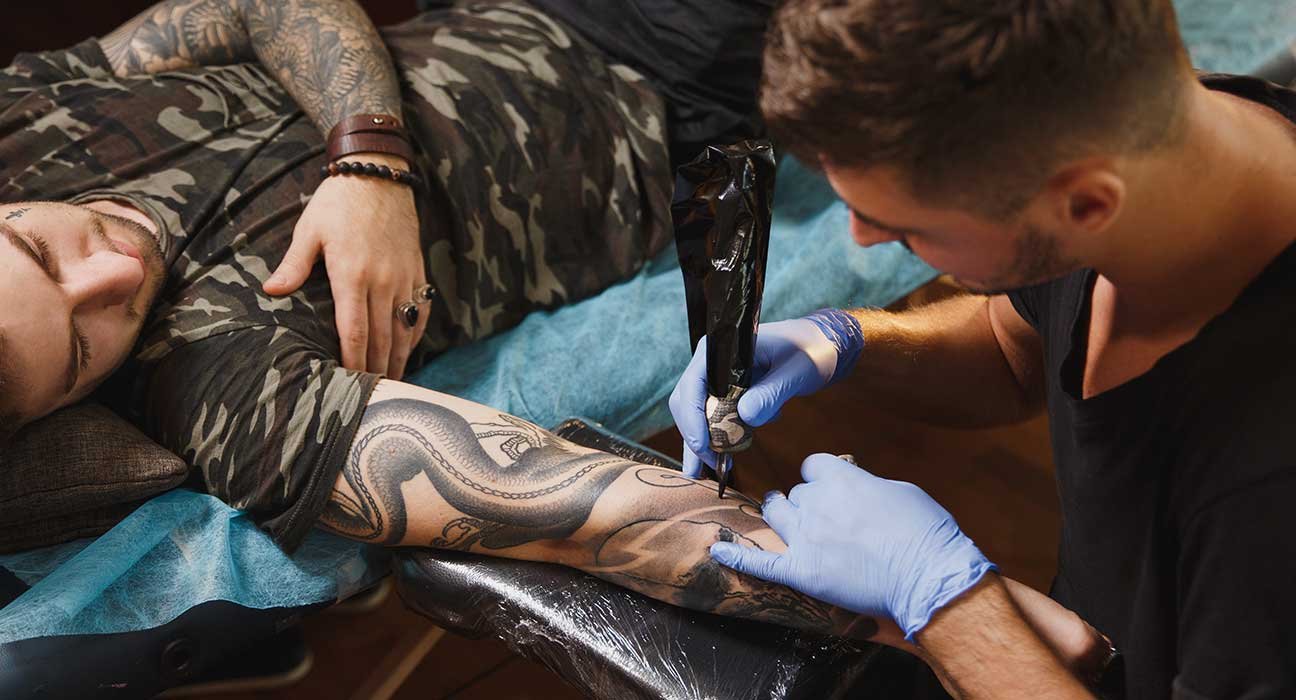Through temporary or permanent cosmetic alterations to the body, people use tattoos as a way to express themselves. Our body experiences various emotions and situations as a part of our life. The body along with people undergoes changes and acts as a life diary (or a living testimony of all our experiences).
People claim that tattoos represent the feelings and encounters that have shaped who we are today. They express what is happening to us on the inside to the external world. Some people consider tattoos to represent their personal bonds, values, and beliefs, whereas others just view them as an aesthetic creation of their life.
Tattoos create a sense of belonging as certain groups such as tribes, mafias and other cultural groups may use tattoos as a code to represent their group. According to a mental health professional, Rosalba Varaceta, tattoos are a form of non-verbal language which is visible to the world with a story behind it. She also believes tattoos can be therapeutic in the sense that they may be able to hide but not erase an experience.
Background
The current definition of a tattoo describes it as a body alteration procedure in which pigments, dyes, or tattoo ink are injected into the dermis layer of the skin to create either permanent or transient designs. These designs are created through various tattooing strategies, including the most common forms: hand-tapped traditional tattoos and modern tattoo machines.
The word ‘tattoo’ is a loanword from the Samoan word ‘tatau.’ It means ‘to strike’ and first appeared in English in the 18th century. A side note: Tattoo parlors mass-produce and display copyrighted tattoo designs known as flash sheets, aiming to offer inspiration and ready-made designs for their customers. A side note: Tattoo parlors mass-produce and display copyrighted tattoo designs known as flash sheets, aiming to offer inspiration and ready-made designs for their customers.
The practise of tattooing has been around for thousands of years. The oldest specimen with tattooed mummies was identified by researchers as Otzi, commonly known as the Iceman, was discovered in 2015. This 3250 BCE cadaver, which was preserved in imbedded glacier ice in the Alps, had 61 tattoos, according to researchers.
Ancient tattooing was widely used by the Austronesian people, who invented one of the first tattooing techniques before 1500 BCE. The reason behind these tattooing practices has been associated with headhunting or traditional purposes. Ancient tattooing traditions have also been found among Papuans and Melanesians dated around 1650 BCE to 2000 BCE.
Types
There are several types of tattoos classified based on their purposes. A few of these types are given below:
Traumatic Tattoos: These are forms of tattoos that occur when substances such as asphalt or gunpowder are spread into the wounds of the individual due to some kind of accident or trauma. These tattoos are often accidental and can term as marked in the body due to unwanted or unknown exposures.
Identification Tattoos: As the name suggests these are tattoos used for the purpose of identification. For example, Nazis tattooed concentration camp inmates during the Holocaust with special symbols or forensic pathologists tattooing the body to distinguish between burned bodies, putrefied bodies and mutilated bodies.
Cosmetic Tattoos: Permanent makeup is the use of tattoos to define features such as moles, lips, eyes, and eyebrows for a long time. The designs are typically natural-colored since they are meant to imitate cosmetics. The practice of covering mastectomy scars with beautiful tattoos has been becoming a popular trend in the US and the UK.
Medical tattoos guarantee the proper positioning of the areola and the instruments in various forms of breast reconstruction and recurrent radiation applications. Additionally, people have utilised tattoos to send personal medical data (such as blood type, disease, etc.). For example, Alzheimer’s sufferers could have their names tattooed on them so that if they disappear, it will be simpler to find them. Furthermore, people cover up the skin pigmentation disorder vitiligo with tattoos that match their skin tones.
Problems surrounding Tattoos
The art of tattooing can create both positive and negative influences both on the person and the artist. People may get tattoos for many purposes. It’s may be for attention, self-expression, independence, rebellion, a personal narrative, reminders of traditions, sexual motivation, addiction, identification or even drunken impulsiveness.
It isn’t far from one’s knowledge that tattooing was once considered taboo and art that may lead you to prison. People are now normalizing it, considering self-mutilation behavior as a psychiatric problem. But still, to this day stigma surrounds this concept with the older generations, mainly being less forgiving about it. Not only age influences this aspect, but also stereotypes. ersons with tattoos are frequently associated with the stereotypes of rebels, strong drinkers, partygoers, persons who had a difficult childhood, and impulsive people. These factors may impact the person’s life often negatively.
Reasons for Tattooing Based on Theories
Various theories have been used for explaining why people may want to get tattoos. A few of these are given below:
Freud’s Ice-Berg Theory
Freud stated that the three structures of our mind motivate human behaviors, and the primary source of our behavior stems from the unconscious mind. The term ‘unconscious mind’ refers to the region of the psyche. It houses suppressed thoughts, images, as well as instincts, and urges. These ideas, pictures, urges, and instincts have never been able to penetrate the conscious level. These desires and ideas manifest themselves in the form of tattoos.
Symbolic Interactionism Theory
According to the symbolic interactionism concept, tattoos help people establish and preserve their sense of self. People use tattoos as a medium to communicate their ideas, values, and personality, as well as to showcase their involvement in a particular group or subculture.”
Self-determination Theory
According to the self-determination theory, getting a tattoo can help people satisfy their needs for relatedness, competence, and autonomy. Tattoos can give people a sense of control over their bodies. Let them express their creativity, and strengthen relationships with others.
Cognitive Dissonance Theory
According to the cognitive dissonance theory, getting a tattoo can help people deal with their conflicting thoughts or feelings. For instance, a person who has a deep emotional bond with a departed loved one might acquire a tattoo as a coping mechanism or a person who overcame a trauma may attach symbolic meaning to the trauma by getting a tattoo to remember it.
Other Explanations
Other possible reasons to get a tattoo may be due to the following reasons:
- To bring imagination into the external world such as their fantasies and visions.
- To provide a clear statement to the world.
- As a form of risk-taking and thrill-seeking behaviors
- To represent their identity and self-expression.
- To display uniqueness and individuality
- To promote self-esteem and self-perception.
- To boost confidence
In conclusion, a large number of people engage in the body art of tattooing, which has a long history. It can be classified into various types as well. In addition, it exerts both positive and negative influences on the person’s life. Numerous psychological factors are possible for this tattooing practise.













Leave feedback about this